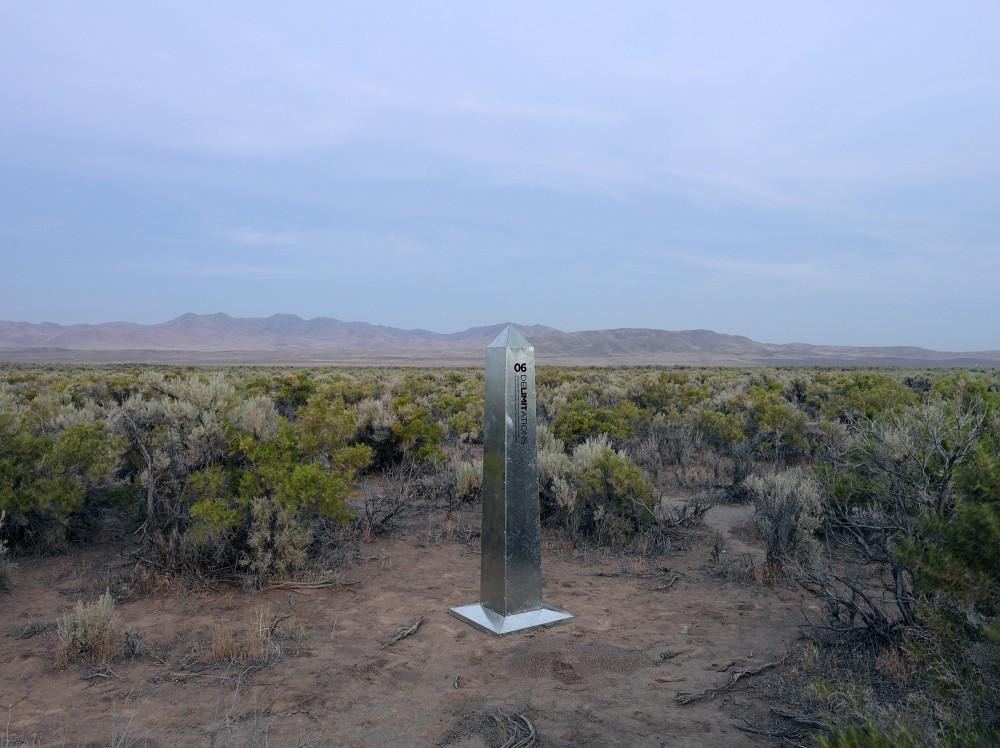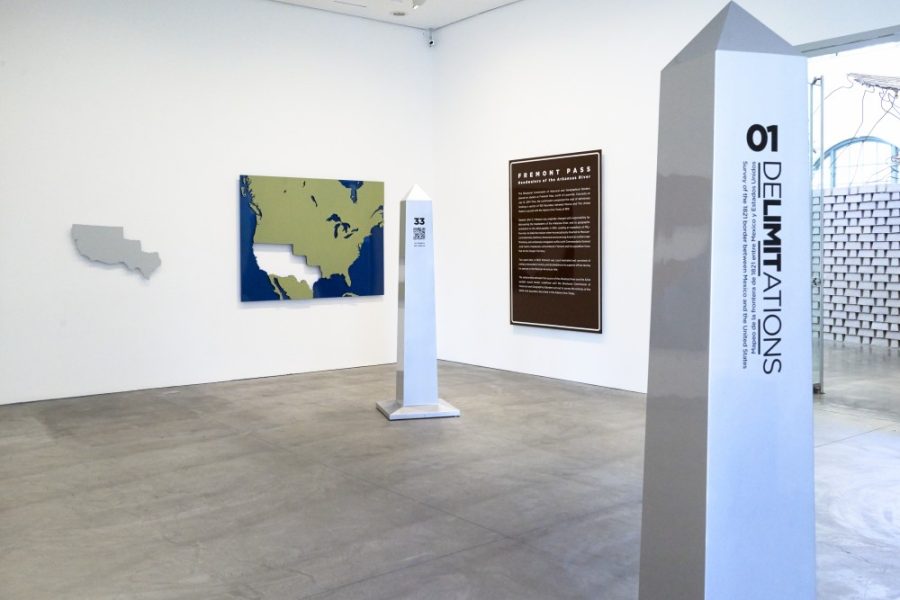David Taylor and Marcos Ramírez ERRE took an artistic approach to show what the Mexico-United States border truly looks like by using 47 obelisks, multiple photographs and 3700 miles of traveling.
Beginning in 2014, Taylor, a photographer and a professor at the University of Arizona School of Art, and Ramírez ERRE, an artist, collaborated on an exhibition titled DeLIMITations, which was highlighted in the New York Times as one of the galleries to see right now.
RELATED: Professor Stories: Cecil Schwalbe
“The exhibition is about the nature of borders over time, but specifically it’s about the fact that there was a border between Mexico and the United States that preceded the current border,” Taylor said. “The exhibition acknowledges the fact that there is an original boundary between Mexico and the United States that was a boundary of agreement whereas the boundary that we all recognize today was in fact a boundary of conquest.”
DeLIMITations features photographs of metal obelisks that Taylor and Ramírez ERRE installed that represent the 1821 border between Mexico and the U.S., taking inspiration from the current debates in the news today.
“In many ways, it’s a response to what our current debates are around the border,” Taylor said. “Who is and who isn’t American, why people try to come to the United States, those debates get further and further disconnected from reality and facts on the ground. So making a gesture like this is a way to make a historic fact present in a contemporary context.”
Along with the photographs, José Inerzia collaborated with Taylor and Ramírez ERRE and directed a film about DeLIMITations.
“Marcos told me about this project and I was interested and wanted to participate by doing a video piece along with the exhibition,” Inerzia said.
With a project as big as DeLIMITations, all hands had to be on deck. According to Taylor, they had to drive thousands of miles in order to complete the work.
RELATED: UA grad students chosen to share design project in Prague
“We fabricated the parts of the obelisks ahead of time and we assembled them as we traveled across the country. That sort of epic camping trip took 30 days,” Taylor said. “The exhibition in New York is the photographs we made of each of the obelisks after we placed them.”
Since most people don’t have the time to make the 2400-mile journey to see each obelisk, the exhibition allows everyone to see the markers in one place through photographs.
“The exhibition is a way to make a 2400-mile-long, site-specific installation visible to audience that’s not out there to drive to every obelisk,” Taylor said. “It is an exhibition that is fully-fledged artwork but is artwork that is necessarily dependent on the original site-specific installation. You can’t have the New York exhibition without the 2400-mile-long road trip.”

For Taylor, the road trip was his favorite part of creating the exhibition. He said that he enjoyed being with Ramírez ERRE and seeing the land through two different perspectives.
“The process of making that installation with Marcos and seeing that landscape simultaneously through the lens of my childhood references, but then seeing it through the lens of a Mexican who recognizes that this is a place of loss,” Taylor said. “To have this journey unfold and recognize what this place means based on another person’s vantage point was really important. It was life changing.”
Similar to Taylor, Inerzia also enjoyed the road trip and the friendships he created along the way.
“My favorite part was being able to stay friends,” Inerzia said. “We had a lot of adventures, a lot of good times and some bad times too. The talks we had during the travel, the friendship and trying to accomplish this challenge was the best part.”
Taylor said that the exhibition couldn’t have existed without Ramírez ERRE. He believes that Mexican and American artists were needed in order to tell the story. Jillian Steinhauer, a freelance journalist who wrote the review of DeLIMTations for the New York Times, liked the exhibition because of the two different perspectives.
“I liked that it was a collaboration between a Mexican artist and American artist because it gives you the perspectives from both sides,” Steinhauer said. “It shows the border as it was between the U.S. and Mexico but from the U.S. and Mexican perspective, so you get a sense of how much land Mexico lost. It is a really great visualization of it.”
Apart from the perspectives, Steinhauer also said that she found the pictures moving. She liked how it made the border visible to people who may not be familiar with it and the educational aspect behind it.
RELATED: Opinions differ at ‘Campus Conversation,’ students demand apology from President Robbins
“I think a lot of Americans are not well versed in our history, and I don’t think a lot of Americans know a ton about where the border was before, so I liked the educational aspect of it too,” Steinhauer said.
What made DeLIMITations stand out to Steinhauer was how the exhibition presented the issue. She believes that while the issue is a hot topic in the news today, the exhibition is not overly political.
“The border between the U.S. and Mexico is a very relevant topic today, but the project isn’t political in any way. It is much more poetic and I really like that,” Steinhauer said. “They are not trying to hit you over the head with it or tell you that you should think a certain thing or feel a certain way. It felt like a really smart and thoughtful way to present a contemporary issue.”
When it came to reading about his exhibition in the New York Times, Taylor was very happy with it. It was featured as one of the exhibitions to see in New York in May.
“It was great,” Taylor said. “Those are very rare and the reviewer was very articulate. It is very satisfying to read a review in which the reviewer clearly has engaged deeply with the work, and when they write eloquently and directly about what your efforts mean, I feel like that’s a gift. It’s a good feeling.”
Follow Jamie Donnely on Twitter









